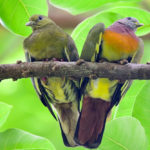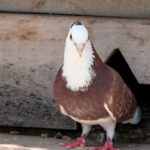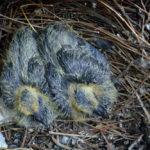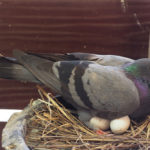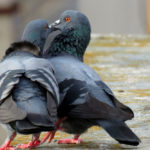If you live in an urban community, then chances are you have probably seen pigeons scurrying around on the sidewalk, with their distinctive grey plumage becoming just another part of your daily surroundings.
These days, many people view pigeons as vermin and they are considered a nuisance in many countries across the world, but what if we told you that there is so much more to these amazing birds?
Not only are pigeons intelligent and fascinating creatures, but they can also make great pets and are known for their affectionate natures.
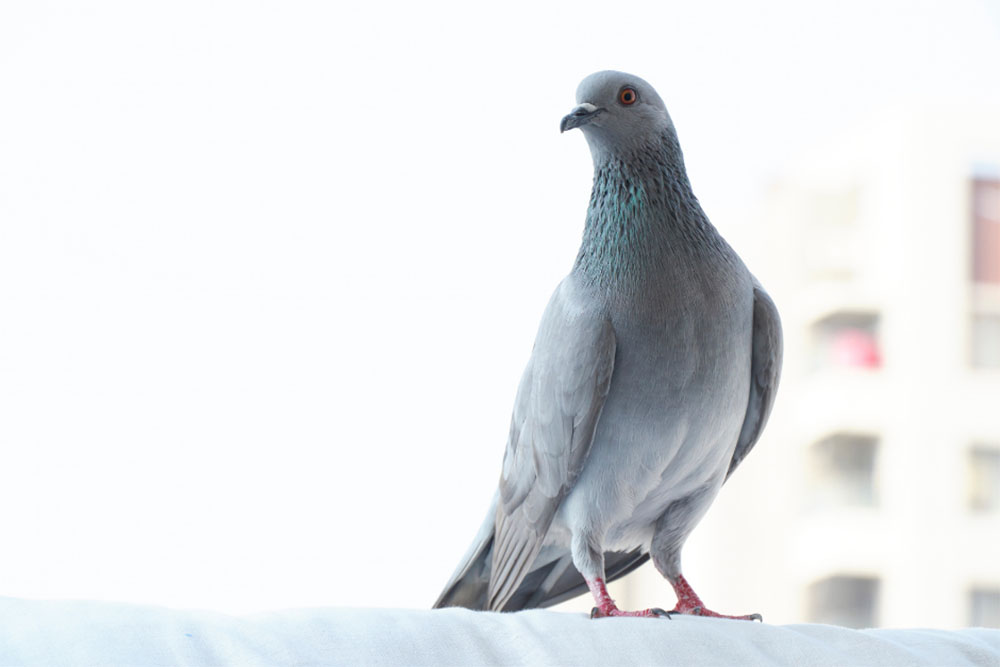
Beyond this, there are countless facts that demonstrate just how interesting these birds can be. So if you want to know more about pigeons, then you have come to the right place.
In the following article, we have gathered 25 fascinating facts about pigeons, covering everything from the bird’s flight patterns to nesting habits.
Even if you are not interested in owning a pigeon, these facts can help you to appreciate the species all the more, so that the next time you see one you can show it the respect it deserves.
Now let’s get started…
1. Pigeons Can Be Taught The Alphabet
Contrary to popular belief, pigeons are very intelligent creatures, which means that they can be easily taught and trained.
However, it may surprise you to learn that pigeons can also be taught the alphabet, which helps to demonstrate just how clever these birds can be.
In fact, pigeons were once taught the alphabet to send messages during the Second World War, as they could use the letters to transmit connections between other countries and navigate their way home, even if that meant crossing hundreds of miles.
2. Pigeons Can Be Big Or Small
One of the most interesting things about pigeons is their size, which can vary depending on numerous factors. In some cases, small pigeons have been known to weigh less than an ounce, while larger pigeons are capable of weighing up to 10 pounds.
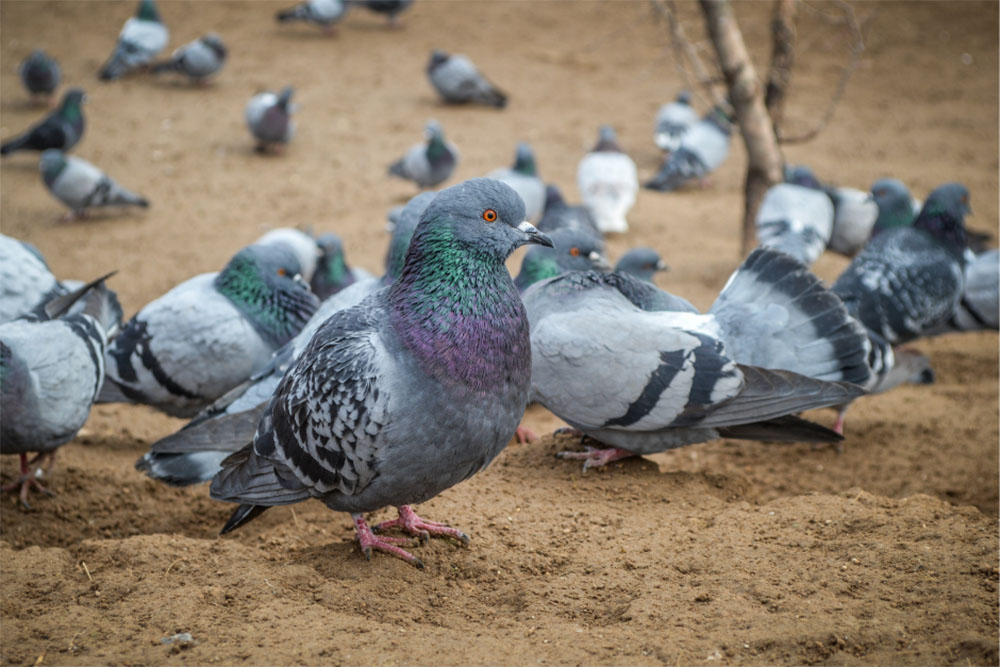
The species has also been known to range in length, with most pigeons measuring between 5 to 19-inches. However, this does not mean that all small pigeons are babies, as a pigeon’s size is often determined by the genetics of the bird.
3. Pigeons Can Hide Their Nests
In contrast to other species of bird, pigeons do not build their nests in trees, which means they are capable of hiding their nests from potential predators.
Instead, pigeons make their nests in sheltered or rocky areas, with the preference usually changing depending on the pigeon’s environment.
While pigeons will use various materials to make their nests, most take the form of unstable structures made from twigs and branches.
However, because pigeons will use the same nest for many broods, the structures will become caked with faeces, which helps to create a hardened shell capable of protecting the nests from damage.
4. Their Main Threat Is Man
Even though it can be hard to comprehend, humans are currently the biggest threat to the pigeon population, with many countries using control measures to lower the number of species in urban areas.
Beyond this, wild pigeons are also killed by hunters every year, which poses yet another threat to the bird’s existence.
However, when it comes to natural predators, the biggest threat to pigeons in the wild are peregrine falcons.
Not only are these birds capable of flying 100 miles faster than pigeons, but they have also evolved to hunt pigeons in numerous ways, whether that be in rural areas or rocky coastlines.
5. Pigeons Can Make Sea Rescues
As a species, pigeons are distinguished from other birds by their intelligence and good eyesight, which means they can be trained to help people who have been lost at sea.
During the training process, pigeons are taught to find red and yellow life jackets, with their eyesight allowing them to locate rescuers when people are in need.
Beyond being able to see red and yellow colours, pigeons can also see ultraviolet light as it surrounds a person in the ocean, which means pigeons are considered more capable of making sea rescues than humans.
6. Some Species Are Now Extinct
Once upon a time, there was a species of pigeon called the passenger pigeon, which was sadly wiped out during the start of the 20th century.
During this time, it has been estimated that between 3 to 5 billion passenger pigeons were killed in North America, with the species being eliminated due to poachers and hunters.
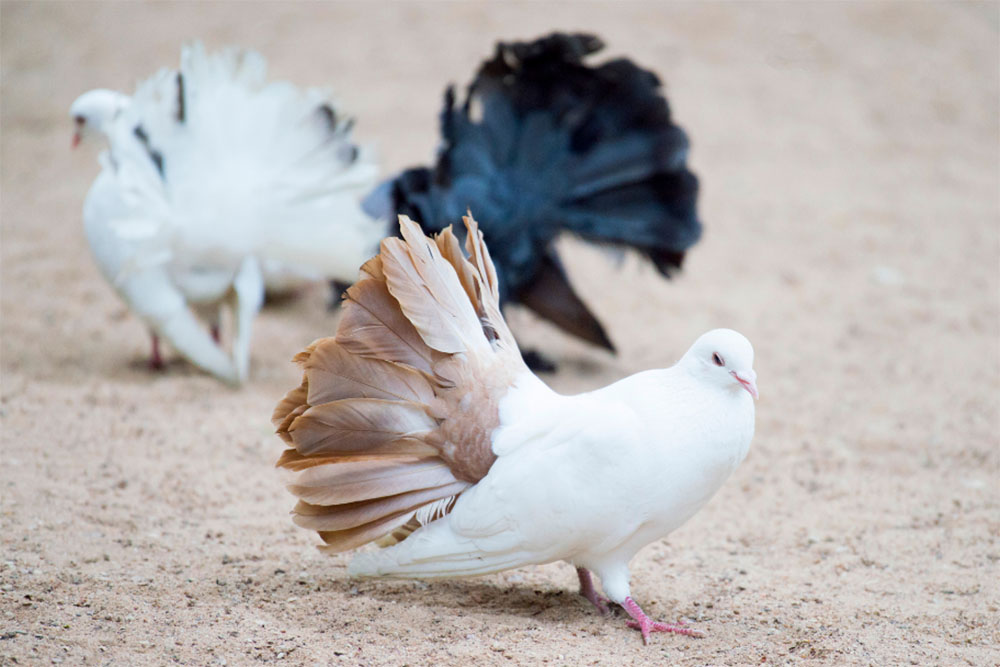
Fortunately, it seems the extinction did not last long and pigeons were once again able to repopulate the continent, with their numbers remaining in good standing to this day.
7. Pigeons Can Be Owned By Celebrities
Although pigeons remain a fascinating subject for both ornithologists and religious orders alike, it seems that the bird is also very popular among certain celebrities, with countless historical figures also demonstrating their appreciation of the species.
For example, it has been recorded that a previous queen of England loved pigeons so much that she kept them as pets in one of her many homes, with Elvis Presley and Mike Tyson also sharing a fascination with the bird. In fact, it has been reported that Tyson currently owns several pigeons, all of which he loves dearly.
Beyond this, the fashion designer Murizzo Gucci is said to have spent $10,000 on a rare American pigeon, which he added to his growing collection.
Paul Newman and Joanna Woodward are also avid fans of the bird, although they choose to keep their interests away from the public.
8. Pigeons Can Be Used For Racing
While many people will look at a pigeon and see a pest, others will look and see a great way to make some fast cash. This is because pigeons are considered very fast birds, which means they can be used for pigeon races.
Although the notion of pigeon races may seem ridiculous, it’s not something to be scoffed at, as the sport can bring in vast amounts of money with the right bird.
Champion pigeons can also be bought for a high price, with the record for the most expensive racing pigeon ever sold currently amounting to $1,900,000 – with the bird in question being purchased back in 2020.
9. Pigeons Were Used On Wall Street
While the mention of Wall Street may bring to mind images of businessmen and the stock market, it probably doesn’t make you think about pigeons.
However, this does not mean that the bird did not have a part to play in the street’s storied history, as during the 19th century they were used to empower one of the wealthiest families in the world.
During this time, the Rothschilds set up a network of communication with Europe using pigeons, which allowed them to send financial information between the two continents.
Because this mode of communication proved more efficient than any other, the Rothschilds were able to use pigeons as a means to increase their wealth and fame.
10. Pigeons Can Deliver Mail
These days, it is common knowledge that pigeons were once used to deliver messages during the war, but did you know that they were also used to deliver the mail?
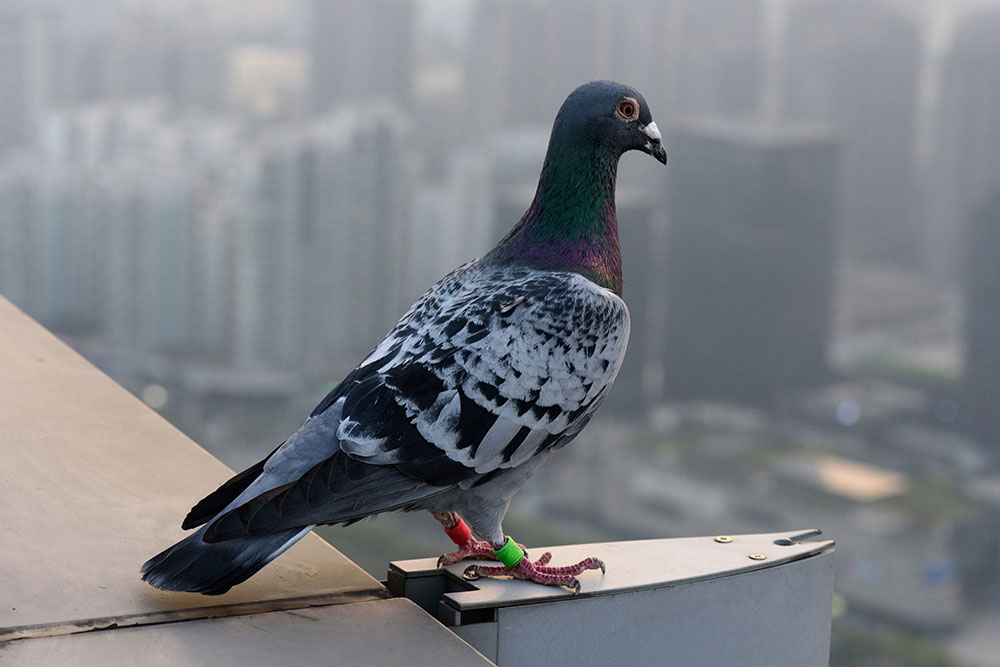
It all began during the late 19th century, when pigeons were used as a means of communication between New Zealand and the Great Barrier Island.
During this time, an unknown boat sank in the ocean and killed over 100 people, with knowledge of the accident not reaching land for 3 days.
Following this, a messaging service was created so that information could be carried between the two islands, with pigeons being used as the most efficient animals for the task.
11. Pigeons Don’t Bob Their Heads
Many people believe that when pigeons walk they are bobbing their heads, even though this is not actually what’s taking place.
When pigeons walk, they undergo a series of movements known as thrust and hold, which allows them to survey their surroundings for predators and food.
During this process, the thrusting movement allows pigeons to see their whole environment, while the hold movement allows their bodies to catch up with the motion of their heads.
This technique was originally discovered when experts used treadmills to study the movements of the species, which helped them to finally determine the process.
However, because these movements happen in quick succession, it appears as if the bird is bobbing its head.
12. Pigeons Can Save Lives
Because pigeons played such a pivotal role during the war effort, the species is often credited as saving hundreds of lives.
During the Second World War, pigeons were used to search sinking boats for people who were still alive and were even used to send messages between enemy lines, saving countless lives that could have been lost.
Since then, pigeons have been awarded various medals and honours for their service, with both the French and British Governments hailing the bird as a hero.
13. Pigeons Can Be Used To Send Messages
Before the advent of telephones and email, pigeons were used as part of the largest communication system in the world, with the species being used to carry messages as far back as the 5th century.
In fact, some historians believe that the practice was originally born in ancient Syria, while others attribute the method to the ancient Egyptians.
Unlike other birds, pigeons are capable of carrying 10% of their body weight and were once used to deliver the results of the Olympic Games.
Of course, pigeons were also used to great effect during the Second World War, where they were used to carry communications over enemy lines.
However, in 2004 the system was disbanded, even though it is still possible to train your pigeons to send messages.
14. They Have Existed For Centuries
Although pigeons are now considered to be a staple of urban life, the species has actually been around for hundreds of years, with records of their existence dating back before the written word.
Currently, it is believed that pigeons existed as far back as 3000 BC, with scientists discovering evidence of the bird’s presence in ancient Mesopotamia (which is now modern-day Iraq).
Because of this, we can assume that it was the ancient Sumerians who first bred pigeons with doves, resulting in the creation of the common species that we all know and love today.
15. Pigeons Can Tell The Weather
As a species, pigeons are born with heightened senses, which means they can hear the low frequencies that humans cannot.
Because of this, pigeons have the ability to detect when storms are approaching, even before the weather has been confirmed by a meteorologist.
Beyond this, pigeons can also use their heightened sense to detect volcanic eruptions, something that is impossible for humans to do.
16. Pigeon Poo Was Once Valuable
We understand that the notion of pigeon poop being considered valuable may seem a little ridiculous, especially when you consider how detested the substance has become in cities across the world.
However, everything we are about to tell you is entirely true, no matter how silly it may seem.
Many centuries ago, pigeon poo (otherwise known as pigeon guano) was considered a highly valuable substance, as it made for an effective fertilizer.
In fact, the poo was so coveted that guards had to be hired to watch over the pigeon coops, should someone come along and try to steal a bird for themselves.
17. Baby Pigeons Are Hidden In Plain Sight
Although it is common to see mature pigeons numerous times throughout the day, it is very rare to see a baby pigeon, which is why some people believe that pigeons are drones sent by the government to spy on the public.
However, this is not true, as you probably see baby pigeons just as much as you see adults.
Unlike other birds, baby pigeons will not leave their nests for six weeks, which means that by the time they fly away they will resemble a mature pigeon in appearance.
However, there are some indicators that can help you to determine a pigeon’s sexual maturity.
For example, baby pigeons will not have the classic red markings around their eyes, as this only comes when they have reached full maturity.
18. Both Parents Incubate The Eggs
In contrast to other bird species, both mother and father pigeons will usually take on the responsibility of incubating their eggs, with both parents taking alternating shifts during the night and day.
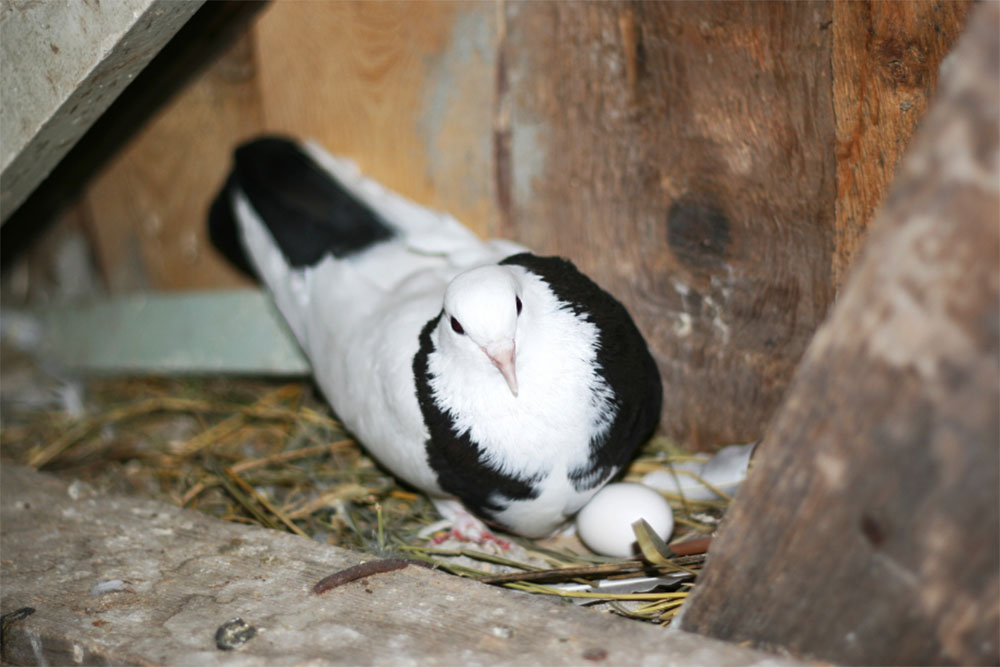
For example, a mother pigeon will usually incubate her eggs during the midafternoon until the night or mid-morning, with father pigeons then taking over until the mother is fully rested.
Once the eggs have hatched, both parents will then care for the children equally until they are ready to leave the nest.
19. Both Parents Feed The Babies
As we previously mentioned, both pigeon parents will share the duty of raising their young, which means both parents will often feed the babies using a combination of regurgitated prey and a substance known as crop milk.
Crop milk is so named because it is produced in the pigeon’s crops, which can be found on both male and female birds.
Beyond this, the babies will also be provided with a steady diet of regurgitated food, which is another duty shared by both parents.
20. Pigeons Can Mate For Life
As you can probably guess from the sections above, pigeons are known to mate for life, which means they find a single mate and stay with them for the duration of their lives.
During this time, both pigeons will produce numerous offspring and raise them until they are ready to leave the nest.
Once a pigeon has found its mate, it will remain in a monogamous relationship until the end of its life and will remain in the same nest together as they raise their young.
21. Pigeons Are Social Birds
Whereas some species of bird are known to be solitary in nature, pigeons can usually be found living in large groups, with the general number of birds ranging from 20 to 30.
This is because pigeons enjoy social interaction and thrive in crowded spaces.
If you decide to keep a pigeon as a pet, you will notice that it can be very affectionate and will always want to be held or touched.
Because of this, some people recommend buying pigeons in groups or pairs, so that they can have some companionship when you are not around.
22. Pigeons Are Religious Symbols
Even though we now consider pigeons to be pests, they still play an important part in several religions across the world and are considered spiritual symbols by the people who care and feed them.
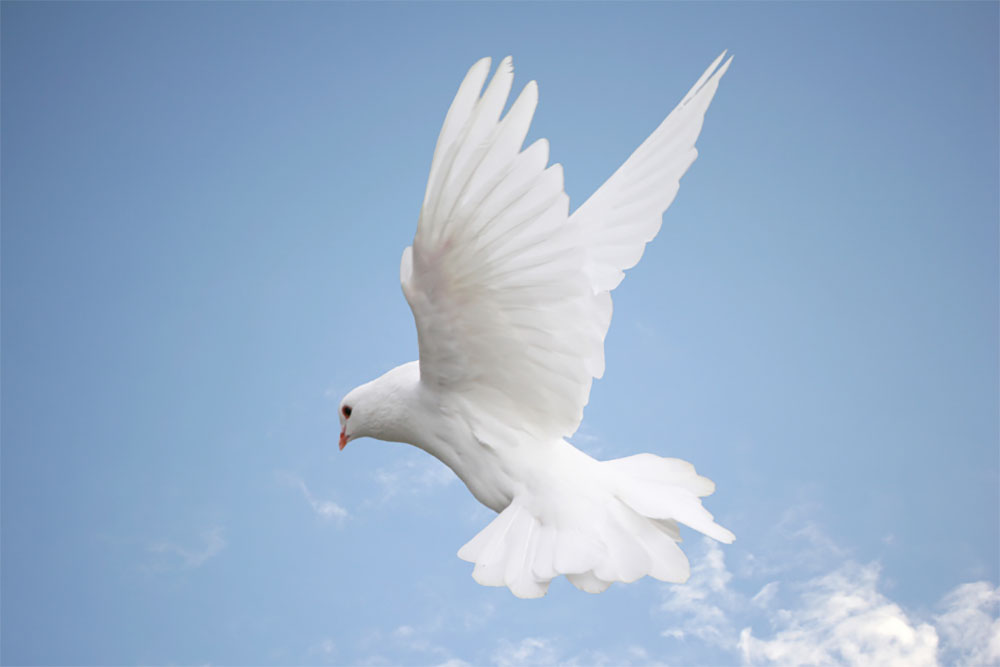
These religions include notable movements such as Muslim, Sikh and Hindu, which is why you should avoid feeding the pigeons in your community, as bread can be extremely detrimental to their health.
In India, it is believed that peoples’ souls take the form of pigeons when they die. While in the Christian faith, pigeons (or doves) are seen as symbols of peace and purity.
23. Pigeons Are Clean Birds
While many people detest pigeons because they are dirty, there is very little evidence to support that statement.
In fact, many experts agree that pigeons are among some of the cleanest birds on the planet, with the species not being known to spread disease.
However, this does not mean that you should approach pigeons in the street or in their nests, as they may disturb them or their natural habitat.
24. Pigeons Can Be Fast
As we previously mentioned, pigeons can be used for races, which means they are an incredibly fast species of bird.
In fact, the fastest recorded pigeon flight currently clocks in at around 92.5miles, although the average flight speed of a pigeon amounts to 60mph.
25. Pigeons Know Their Own Faces
Recent studies have shown that pigeons, unlike other notable bird species, are able to recognize their own faces.
This was discovered when scientists used mirrors to show pigeons their faces, before giving them a picture of another pigeon.
During this test, the pigeons were able to identify their own faces, demonstrating their intelligence.
However, that’s not all, as pigeons can also tell the difference between different humans, especially when working with photographic images.

